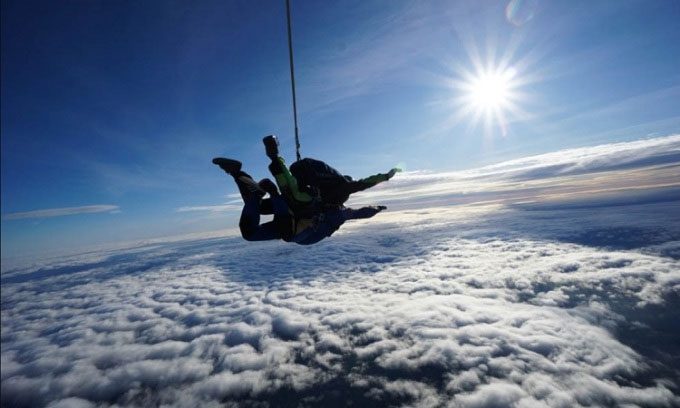You will undoubtedly feel cold and wet when skydiving through clouds, regardless of the type of cloud.
The experience of falling through clouds will depend on the type of cloud, protective gear, and weather conditions. However, the general outcome is that you will be soaked, freezing, and possibly even unconscious, according to those who have experienced it.

The experience of skydiving through clouds depends on the type of cloud. (Photo: Skydive Langar)
Clouds form when water molecules condense around particles in the air, known as aerosols. The nature of these particles affects the type and size of clouds. However, according to Marilé Colón Robles, an atmospheric scientist at NASA’s Langley Research Center in Virginia who specializes in cloud research, “not all aerosol particles are the same.”
Some natural aerosols, such as dust, often promote the formation of ice crystals, while water vapor from the ocean contributes to the creation of water molecules. Scientists also experiment with introducing artificial aerosols into the atmosphere, including silver iodide or lead, to produce bright-colored clouds that help reflect solar radiation or induce rain and snow.
As skydivers fall from heights of 4,000 meters, it is most likely that they will encounter thick stratocumulus clouds and cumulus clouds with flat bases. Both types of clouds are primarily composed of water molecules. When they appear above 1,980 meters, they are referred to as mid-level clouds and cumulonimbus clouds to mark their position in the atmosphere.
Ryan Katchmar, a skydiving instructor in Utah who has completed 10,000 jumps, emphasizes that people should not attempt to fall through clouds, as there is no way to track potential hazards, including other jumpers or aircraft. However, sometimes it is unavoidable. “The feeling is unlike anything else. You fall through a white room and then come out at the bottom. If it’s a thick, dark cloud, you will be drenched,” Katchmar shares. He enjoys feeling the moist yet fresh air.
Katchmar has also experienced unexpected cold conditions. For this reason, skydivers often dress warmly to avoid skin injuries. In a recent jump in Utah, while filming another skydiver, Katchmar noticed that the woman’s nose and cheekbones turned white due to ice forming around her as she fell through the cloud.
The most extreme cases of skydiving in bad weather involve thunderstorms. Inside a thunderstorm cloud, warm air can rise at speeds of 160 km/h, but at high altitudes, particles fall as rain or hail. Additionally, most lightning occurs within or between thunderstorm clouds.
Only two people have survived a skydive through a thunderstorm cloud containing lightning. In 1959, American Colonel Henry Rankin jumped from a fighter jet in severe weather and spent 40 minutes inside a thunderstorm cloud, suffering from frostbite and nearly drowning before being expelled at an altitude over a hundred meters above ground and landing in the treetops. Decades later, in 2007, paraglider Ewa Wiśnierska accidentally got caught in a thunderstorm cloud while training for the World Championships. Wiśnierska lost consciousness due to lack of oxygen and landed several hours later, 60 km away.


















































